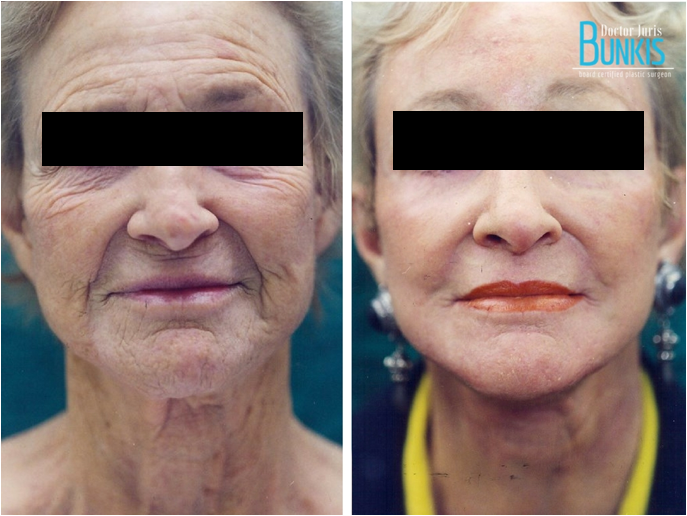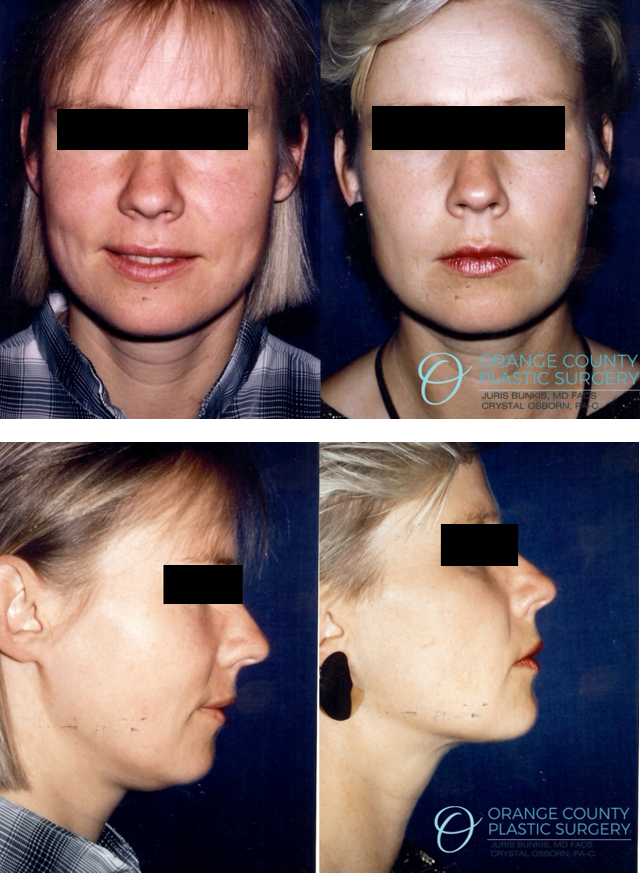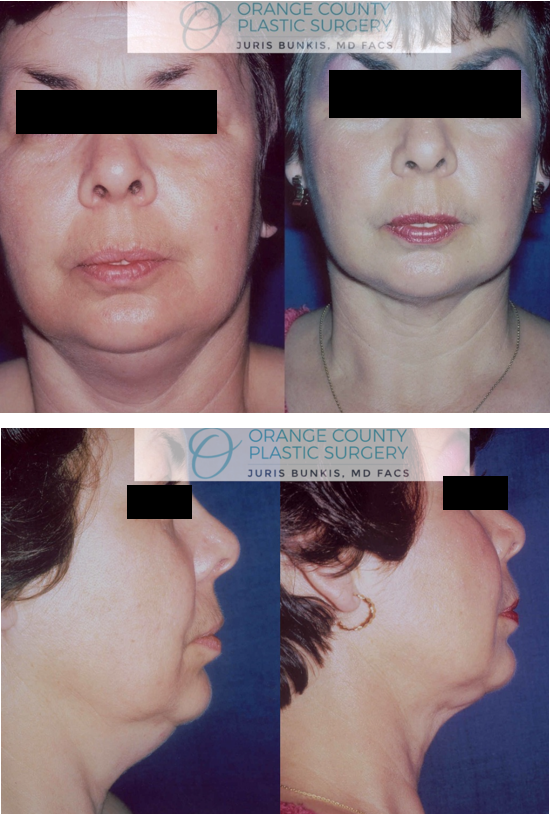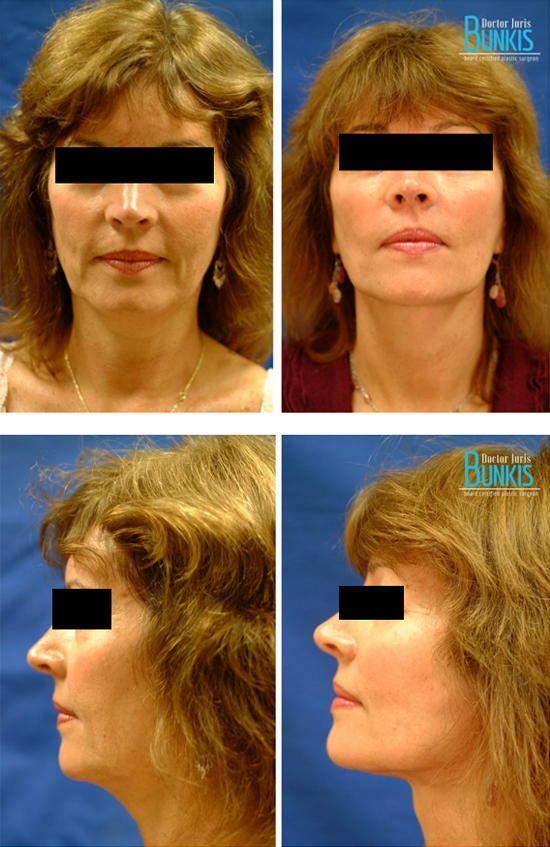Case Report
Volume 2 Issue 4 - 2020
When Skin Care Alone does not cut it!
1M.D., F.A.C.S. Orange County Plastic Surgery, 4501 Birch St, Newport Beach, CA 92660, United States
2M.D. Salisbury Plastic Surgery, 39 Salisbury St, Ste 7, Worcester, MA 01609
3PA-S, MCPHS University, 179 Longwood Ave, Boston, MA 02120
2M.D. Salisbury Plastic Surgery, 39 Salisbury St, Ste 7, Worcester, MA 01609
3PA-S, MCPHS University, 179 Longwood Ave, Boston, MA 02120
*Corresponding Author: Juris Bunkis, M.D. F.A.C.S. Orange County Plastic Surgery, 4501 Birch St, Newport Beach, CA 92660, United States.
Received: August 03, 2020; Published: September 02, 2020
Abstract
A patient’s aesthetic concerns may be addressed by a number of professionals including aestheticians, family practitioners, nurses and physician assistants, dermatologists, and plastic surgeons. Yet they differ in training, resources, and perspectives. Most practitioners find it difficult to discuss all pertinent options with a patient and to refer the patient to a different provider if they do not offer the ideal treatment modality in their office. Many patients are frustrated by what they perceive as “no improvement” after years of treatment and thousands of dollars that have yielded unacceptable results. The ideal practice environment would be a large group with well-trained aestheticians, nurses and physician assistants, dermatologists, and plastic surgeons, who would refer patients to each other, dependent on the best treatment option for each patient. Sometimes, skin care alone, radiofrequency treatments, liposuction, or thread lifts just do not cut it!
Keywords: Aesthetics; Abdominoplasty; Breast Augmentation; Thermage®; ThermiSmooth®; Facial Rejuvenation; Aging, Skin Sag; Liposuction; Face Lift; Rhytidectomy
Introduction
A patient’s aesthetic concerns may be addressed by a number of professionals including aestheticians, family practitioners, nurses and physician assistants, dermatologists, and plastic surgeons. Yet they differ in training, resources, and perspectives. This results in discussing and presenting various—yet familiar—treatment modalities to the patient. Unfortunately, this promotes the various machines that one has invested in, even though a better option would be a completely different procedure not in their armamentarium. Most practitioners find it difficult to discuss all pertinent options with a patient and to refer the patient to a different provider if they do not offer the ideal treatment modality in their office; therefore, it is common for patients to only see a single practitioner in a smaller clinical setting. What is the ideal practice environment for a patient with an aesthetic concern? The ideal would be a large group with well-trained aestheticians, nurses and physician assistants, dermatologists, and plastic surgeons, who would refer patients to each other, dependent on the best treatment option for each patient.
For example, we have seen many unhappy patients after receiving an unacceptable result from an abdominal liposuction; the ideal treatment would have been an abdominoplasty—perhaps with some peripheral liposculpting—which addresses the patient’s abdominal laxity and adiposity was to address the patient’s abdominal laxity and adiposity would have been an abdominoplasty. There are many practitioners who perform liposuction without expertise in surgical body sculpting. There is an old saying, “When you are a hammer, the whole world looks like a nail.” Patients seeking help with abdominal laxity in this environment are likely to be offered a liposuction procedure, resulting in increased surface irregularities and laxity without addressing the patient’s underlying concerns.
There are also many surgeons lacking expertise on breast surgery. We have seen a similar pattern in patients with minor breast ptosis who have had a huge implant inserted to overcome the ptosis, leading to disastrous results. If such a patient sees a surgeon well versed in all of the options relating to breast surgery, certainly a more appropriate option would have been presented to the patient and the results would have been satisfactory.
Many patients in our office have been unhappy after a treatment series with machines like Thermage® or ThermiSmooth®. Yes, there is a place for such treatments in our armamentarium since we offer them in our practice. Yes, you can demonstrate improvement photographically with such radio frequency treatments. Yes, some patients will insist on a non-surgical attempt at facial rejuvenation. But it behooves us as aestheticians, nurses, physician assistants, and physicians to assess the patients physical condition and recommend a treatment that will address the patient’s needs and meet their expectations—even if that means referring the patient to a different provider who specializes in the type of treatments that will yield the best results. However, what drives the recommendations made by many providers can be influenced by which machines they have purchased. We all have great intentions when purchasing a new machine, paying hundreds of thousands of dollars for them, but recouping our investment is not a valid reason for recommending a specific treatment that has no chance of meeting a patient’s expectations.
In our practices, we most frequently see patients frustrated by what they perceive as “no improvement” after years of treatment and thousands of dollars that have yielded unacceptable results. Perhaps some minor improvement could be demonstrated objectively, but the treatments have not met the patient’s expectations. One’s gold standard should include treatments that meet the patient’s expectations. That is our goal with every patient.
Materials and Methods
Personal patients of Dr. Juris Bunkis and Dr. Deborah Ekstrom were used. Research articles were found via a general database. The following key words were used: face lift, ThermiSmooth®, aging process, skin sagging, abdominoplasty and breast augmentation. Inclusions included peer reviewed articles from 1970 to 2020. Exclusions included non-academic articles before 1970.
Results and Discussion
Figure 1 illustrates a 79 year old patient who is far beyond seeing the improvement she desires from facials, microneedling, light peels, Botox, fillers or any type of thread lift or minimally invasive facelift procedure. She was helped by a four-hour facelift, brow lift, upper and lower lid blepharoplasty, and a full face CO2 resurfacing. To date, she is very satisfied with the results.

Figure 1: 79 year old female, unhappy with her face after years of treatments by her aesthetician and a dermatologist did not give her a “more youthful” look. The after photograph was taken at age 81, two years after a facelift, endoscopic brow lift, an upper and lower eyelid blepharoplasty, the Natural A-to-V facelift, and a full-face CO2 laser resurfacing, all in a four hour surgical procedure. (Actual patient of Dr. Juris Bunkis).
During the normal aging process, all human beings “sag” as they age, some sooner than others, some more or less than others—this process is universal. This can begin to happen in the late 30’s or not begin until the mid-50s. This occurs because, with age, the SMAS and platysmal layers become lax and droop, pulling the overlying fatty layer and skin with it. In youth, faces usually have fullness in the malar regions, with age this fullness descends down towards the jowl area and neck. In our facial rejuvenation lectures, we describe a youthful face as being V-shaped, and with age, the face assumes of more pear or A-shape. There are exceptions, but most middle-aged patients with jowling expect a youthful V-shaped face after their treatments and will not settle for anything less than that. Our treatment recommendations, once again, have to be predicated by the patient’s physical findings and each patient’s expectations—not by which machine we own or our expertise. A neck liposuction, with or without radio frequency skin tightening, certainly is a minor procedure that can produce dramatic results and frequently can be performed very well by physicians who are not fully trained as surgeons. Beautiful results can be obtained in the younger patient with excellent skin tone (Figure 2). As a matter of fact, doing anything more aggressive in these patients would be the wrong thing to do, even if the patient requests more extensive surgery.

Figure 2: 35 year old female before and after an upper eyelid blepharoplasty and a neck liposuction (Actual patient of Dr. Juris Bunkis).
But for patients with neck fullness, jowling and neck laxity, most will wish to have a tighter, V-shaped face and not settle for anything less. There are exceptions as in this 52 year old cancer survivor who had a little extra upper lid skin and a bull neck but mentioned she had “suffered enough” and did not wish to undergo a facelift. After reviewing the options and showing her photographs of similar patients, she chose to undergo a neck liposuction with ThermiTight® radiofrequency skin tightening (Figure 3). The final result definitely shows improvement, she was thrilled with the outcome, but many of our suburban patients would expect a more significant neck improvement which could only be achieved with a facelift.

Figure 3: 52 year old female with significant facial laxity and neck adiposity, before and after an upper eyelid blepharoplasty and a neck liposuction with a ThermiTight® radiofrequency treatment (Actual patient of Dr. Juris Bunkis).
But a patient expecting a youthful and non-droopy neck should have the aging process and facelifts as an options reviewed with them at length. During such a procedure, the skin is elevated and the SMAS and platysmal layers repositioned to a more youthful position, giving the patient malar fullness instead of jowl fullness and neck laxity, restoring a youthful, V-shaped face (Figure 4).

Figure 4: 50 year old female before and after a Natural A to V facelift, endoscopic brow lift and lower eyelid blepharoplasty. Note the restoration of upper facial fullness (Actual patient of Dr. Juris Bunkis).
Conclusion
In summary, use your expertise to fully evaluate each patient and determine their goals and expectations. Then either deliver the most appropriate treatment for that patient, or if you do not offer that particular service, refer the patient to a provider who can do the right thing for the patient. Sometimes, skin care alone, radiofrequency treatments, liposuction, or thread lifts just do not cut it!
References
- Conway, H. (1970). The surgical face lift—Rhytidectomy. Plastic and Reconstructive Surgery, 45(2), 124-130.
- Didie, ER & Sarwer, DB (2004). Factors that influence the decision to undergo cosmetic breast augmentation surgery. Journal of Women’s Health, 12(3), 241-253.
- Ezure, T, Hosoi, J, Amano, S & Tsuchiya, T (2009). Sagging of the cheek is related to skin elasticity, fat mass and mimetic muscle function. Skin Research and Technology, 15(3).
- Key, DJ & Bourdreaux L (2016). A proposed method for upper eyelid and infrabrow tightening using a transcutaneous temperature controlled radiofrequency device with opaque plastic eye shields. Journal of Drugs in Dermatology, 15(11).
Citation: Juris Bunkis, Deborah Ekstrom and Ivanna Fux Kahn. (2020). When Skin Care Alone does not cut it!. Journal of Medical Research and Case Reports 2(4).
Copyright: © 2020 Juris Bunkis. This is an open-access article distributed under the terms of the Creative Commons Attribution License, which permits unrestricted use, distribution, and reproduction in any medium, provided the original author and source are credited.
